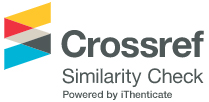
With the rise of technology, this age has opened gates to many new ways of enabling people to display their works in innovative ways. One such example of it is scholars using open access journals for publishing their articles. But over a few years, scientists have raised their eyebrows on OA, debating on whether it is a nice option or not. To begin with, let us first define what open access actually means.
By definition, Open access journals are educational journals that are available online to the reader without any sort of economic, legal, or mechanical barriers other than those inseparable from gaining access to the internet itself. Although open access journals are easily available to the reader, without any cost, there are still costs linked with the publication and production of such journals. Some are funded, and some involve payment on behalf of the author.
Open Access was established as an undertaking in the educational research to free knowledge and it has been embraced over the Internet. As already mentioned, open access implies unhindered access to resources and sharing them in the framework of academic research. A large number of researchers are embracing this practice mostly by publishing on the Internet which reduced the publishing and circulation costs.
The debate on whether open access journals are suitable for publication is not new. It has been around for a considerable amount of time now and opinions remained divided about the quality standards of the paper. Also, open access doesn’t always mean “free”. Some open-access journals are funded or require authors to collaborate the cost of publishing their work, for example. But the extensive choice of papers and the chance of crowd-sourced peer review do offer the chance for quicker publication and a possibly limitless readership.
The first and foremost significance of open access journal is that it is free for all. The fundamental idea of open access is the foundation of its key benefit—articles are freely available for anyone who wishes to read them. For readers and libraries, the advantages of not having to pay for a distinct article or journal subscription are understandable. However, while the end user doesn’t have to pay to read an open access article, someone has to pay for the costs of publication. Often, it is expected from the author, maybe through their company or a research grant, to cover these costs. In times of severity and funding cuts, it can disappoint researchers from going for open access. But this kind of trivial disadvantage must not overshadow the fact the open access provides a wide audience and hence a financial risk may be taken in order to find success in future.
Talking about the audience, many reviewers believe that open access publication leads to a lack of quality control. Since it is an easy-to-approach method, and helps in covering expenses, it ends up being a home of a wide range of papers, including those of low quality or poor research. This debate was recently reignited with the reception of a spoof article by a Science editor in many open access journals.
But as they say, diamonds are found between the chunks of coals. A well-written paper that profoundly schemes out its research and findings (if any) will not go overlooked by the wide range of audience that open access provides. The vital characteristic of open access is the increased readership, which is a result of easy and approachable method. In an age where the sum of articles being published is rising steeply, open access can help an article to be more discoverable online. And eventually, an amplified number of readers may change into an increased number of citations for the author.
Another magnificent characteristic of open access is that it can help provide scientists in developing countries with the opportunity to participate in the international research community, with some open access journals even proposing discounted or waived publication fees for papers from low-income countries. Such a financial help has been started by the concerning organizations as they aim on extracting the most qualified material, even if it is from an -underdevelopment country.
Although there’s still a long way in developing the procedure of open access journals and making it more feasible than it already has been, it can safely be said that such an option is quite genuine in helping the rookies with their papers. It often acts as a motivator to scholars as well, since it increases (considerably) the citation for the author. With these reasons, one may certainly say that open access journals are quite practical in their approach and objectives and hence they can be considered as an alternative for publishing scientific papers.



